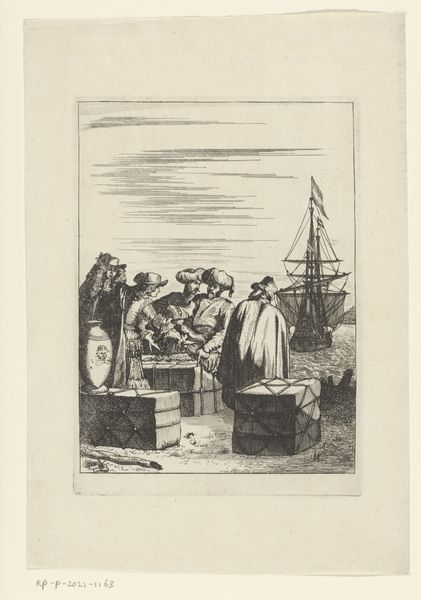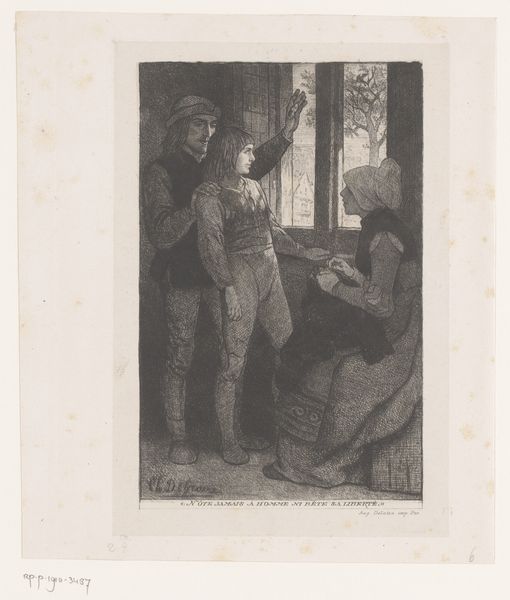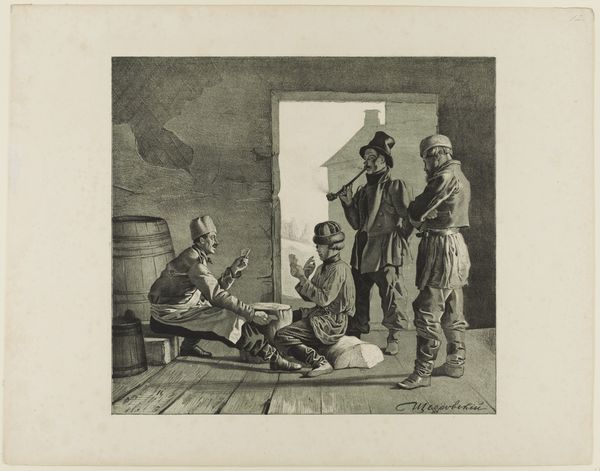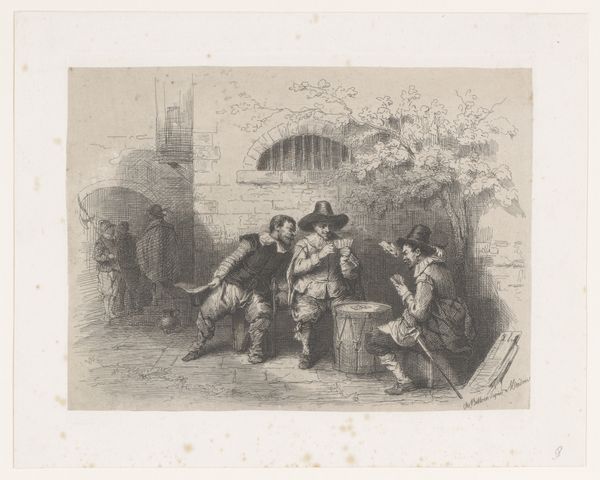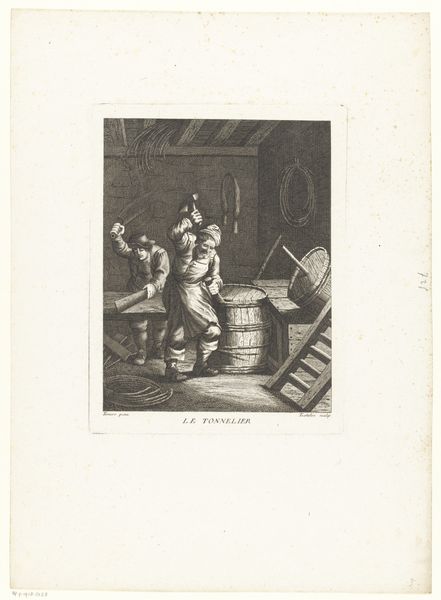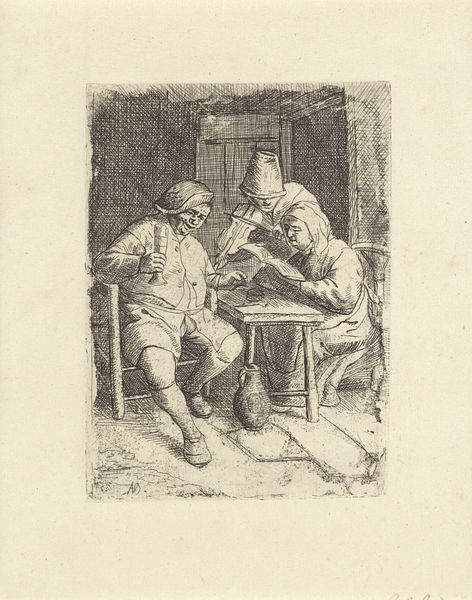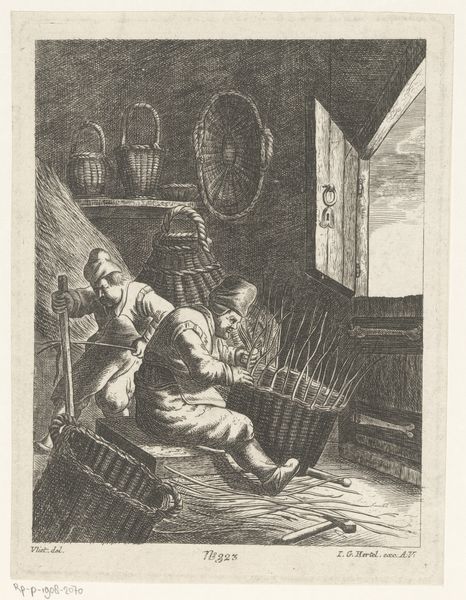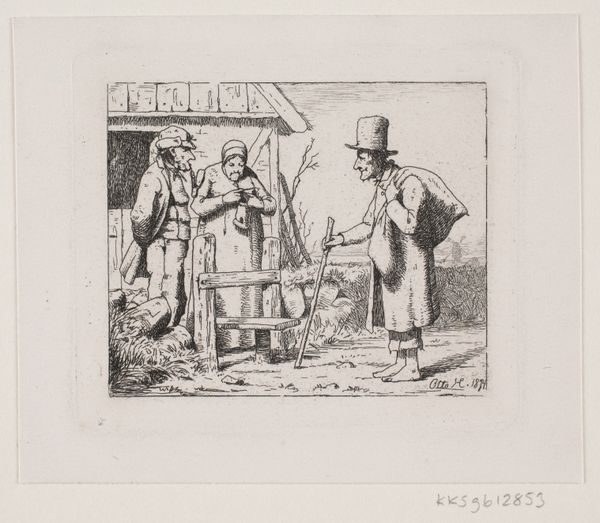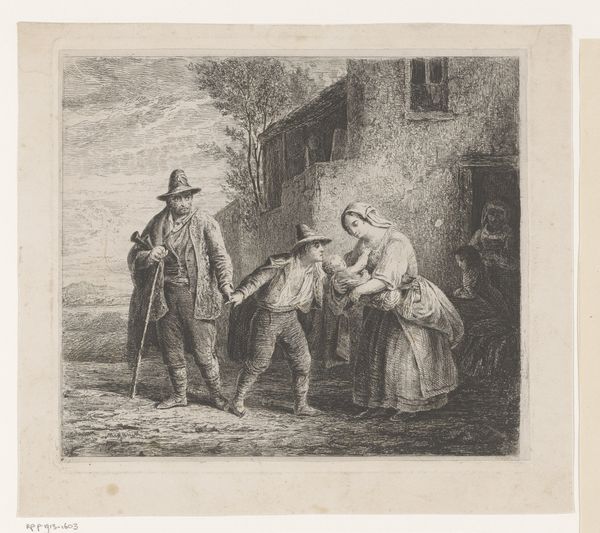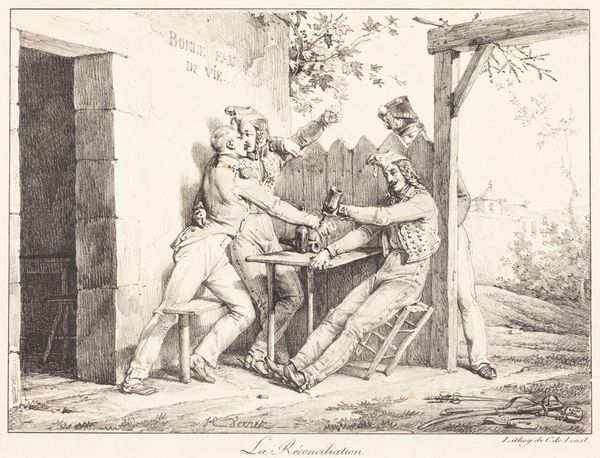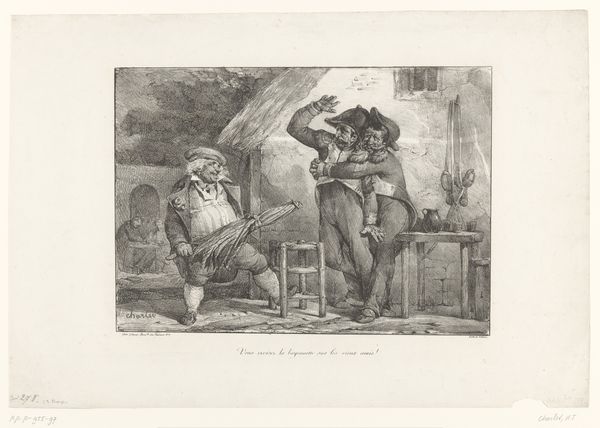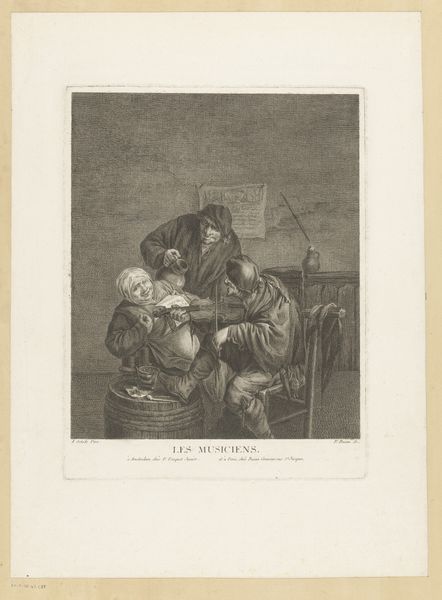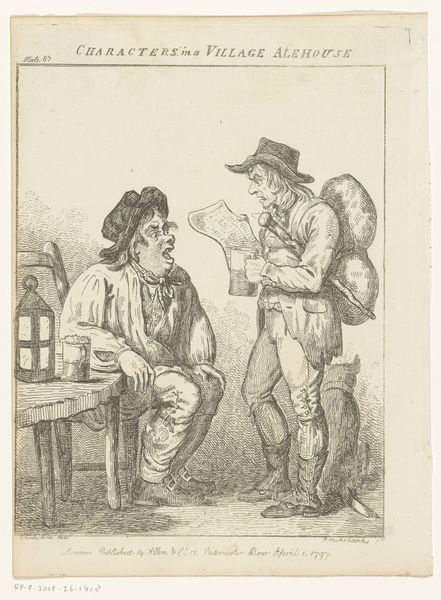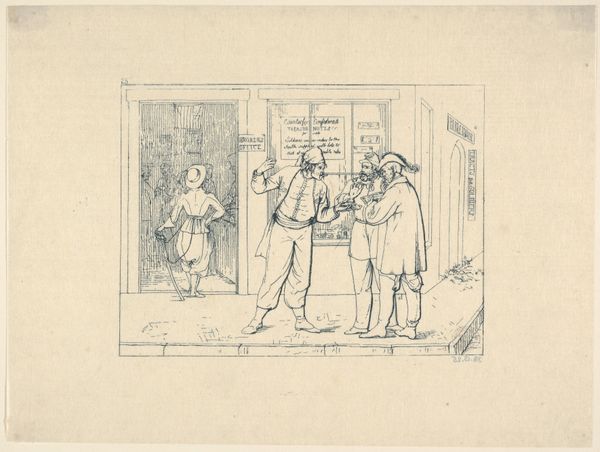
drawing, print, etching
#
drawing
# print
#
etching
#
figuration
#
romanticism
#
line
#
genre-painting
Dimensions: height 136 mm, width 195 mm
Copyright: Rijks Museum: Open Domain
Editor: This etching, “Woman Pouring a Glass for Two Card Players,” made by Willem Linnig in 1842, has such a casual, almost comical tone. I’m curious about how such scenes reflect society at the time, specifically who these characters were made for. How do you interpret this work? Curator: Well, looking at it materially, the etching itself is significant. Consider the labor involved in creating it - the painstaking work of carving the image into a metal plate to produce reproducible images. The lines are rather course and hastily drawn, indicative of cheap reproduction rather than fine art. The imagery depicts everyday genre scene from working life. Now, thinking about that reproducibility, who had access to prints like these in 1842, and what narratives were they being exposed to? Editor: That’s a good point. So the material—the print medium—reflects the kind of accessibility, which would have allowed for greater dissemination of this…narrative? Curator: Precisely. Look at what's depicted, this informal moment of leisure and labor intertwined. Card games, drinks being served - these were social activities deeply connected to the economics and hierarchies of the time. Who are the laborers, who consumes their work, how does it impact artmaking overall? What do the figures’ clothes say about social strata at the time, how cheap or fine are the clothing depicted through line, tone, form? It's about decoding the material reality embedded within this seemingly simple scene, and how that intersects with consumption. Editor: So, the material itself isn't just a vehicle for the image, but an integral part of understanding its meaning within the social and economic context? Curator: Exactly. By focusing on the material conditions of its creation and consumption, we get a much richer understanding of the artwork's role within 19th-century society, its social networks of production. Editor: That completely shifts my perspective! Thanks so much! Curator: My pleasure, this art is about production!
Comments
No comments
Be the first to comment and join the conversation on the ultimate creative platform.
